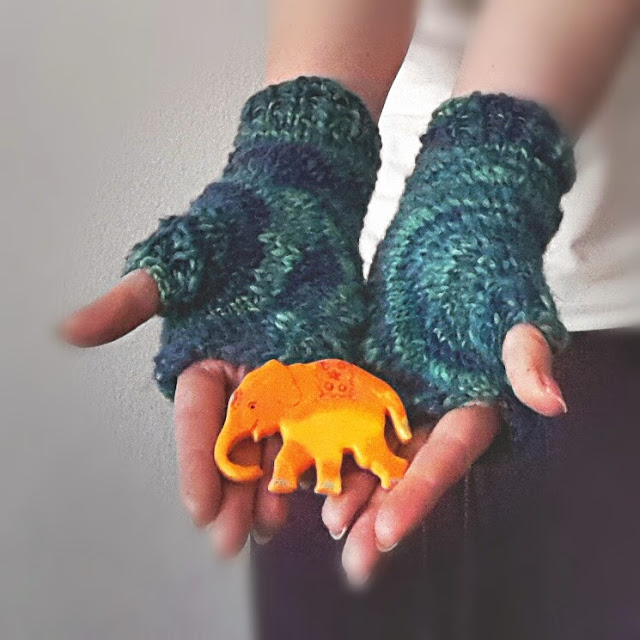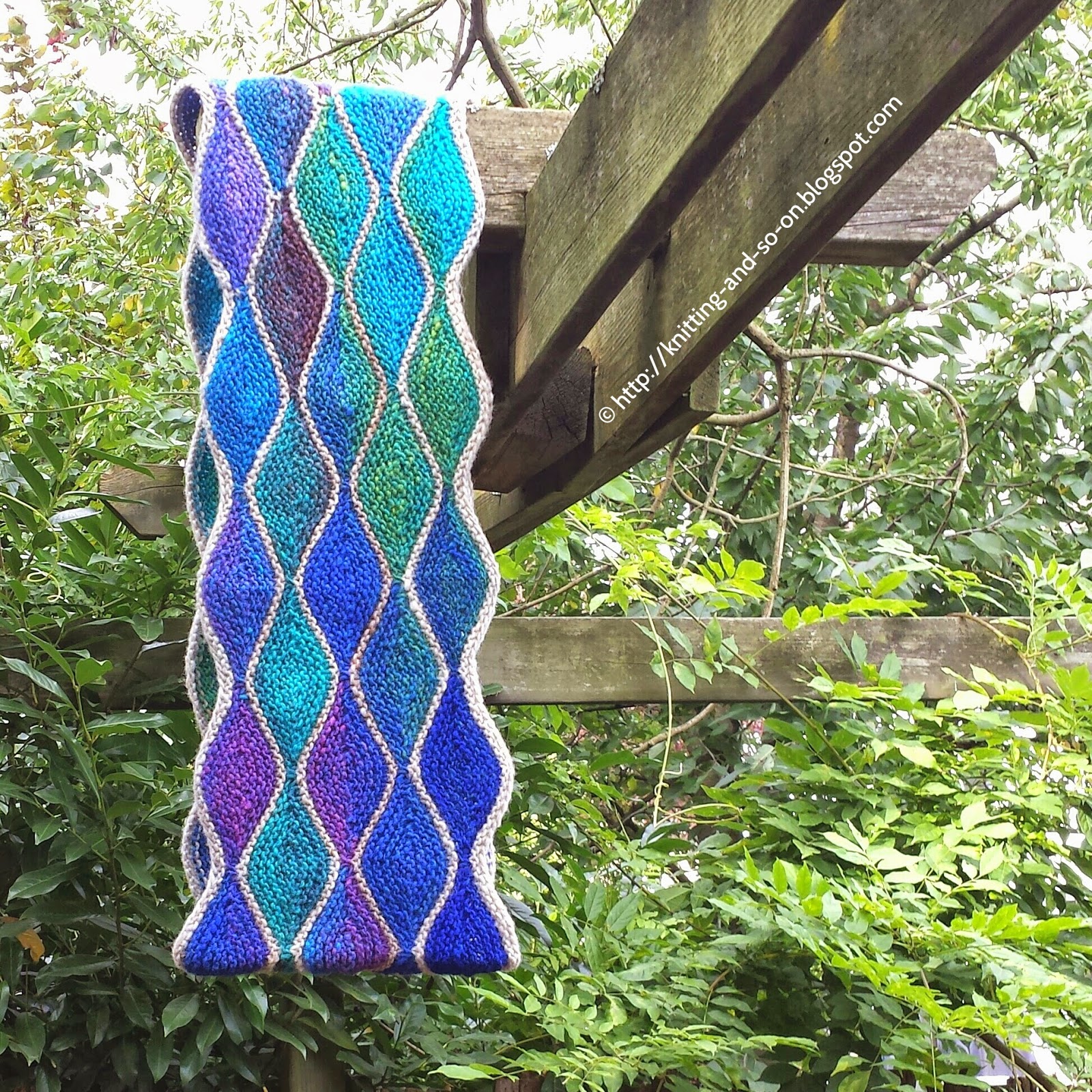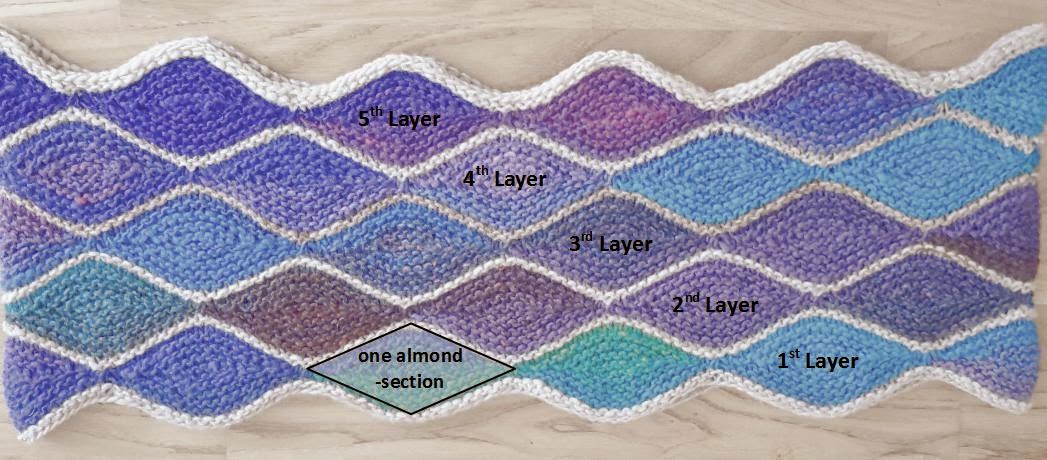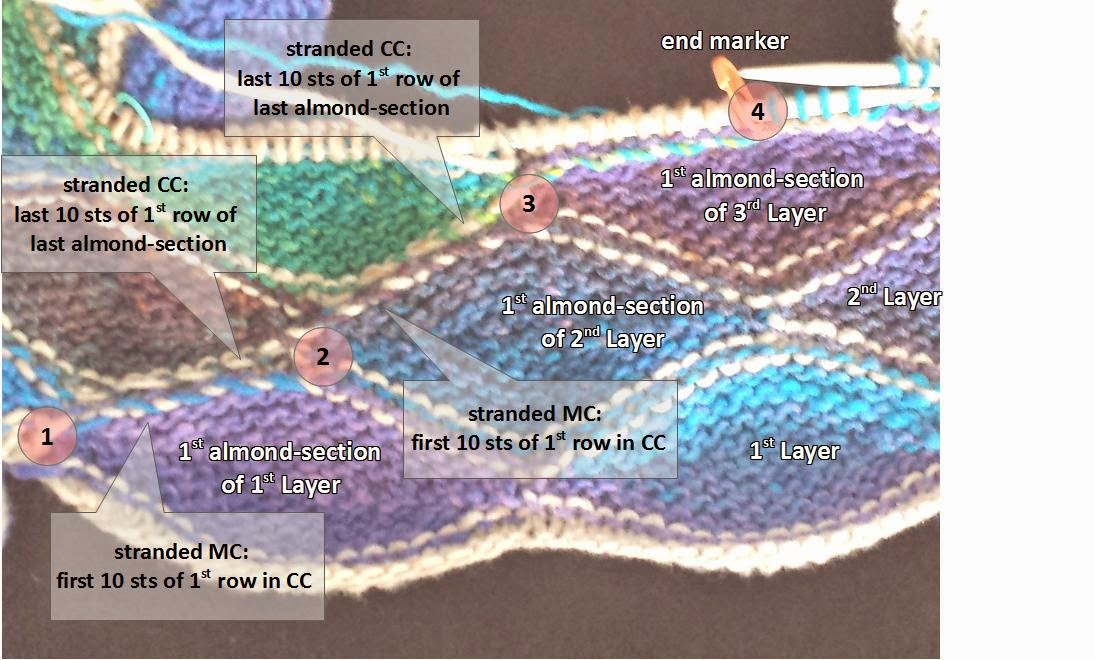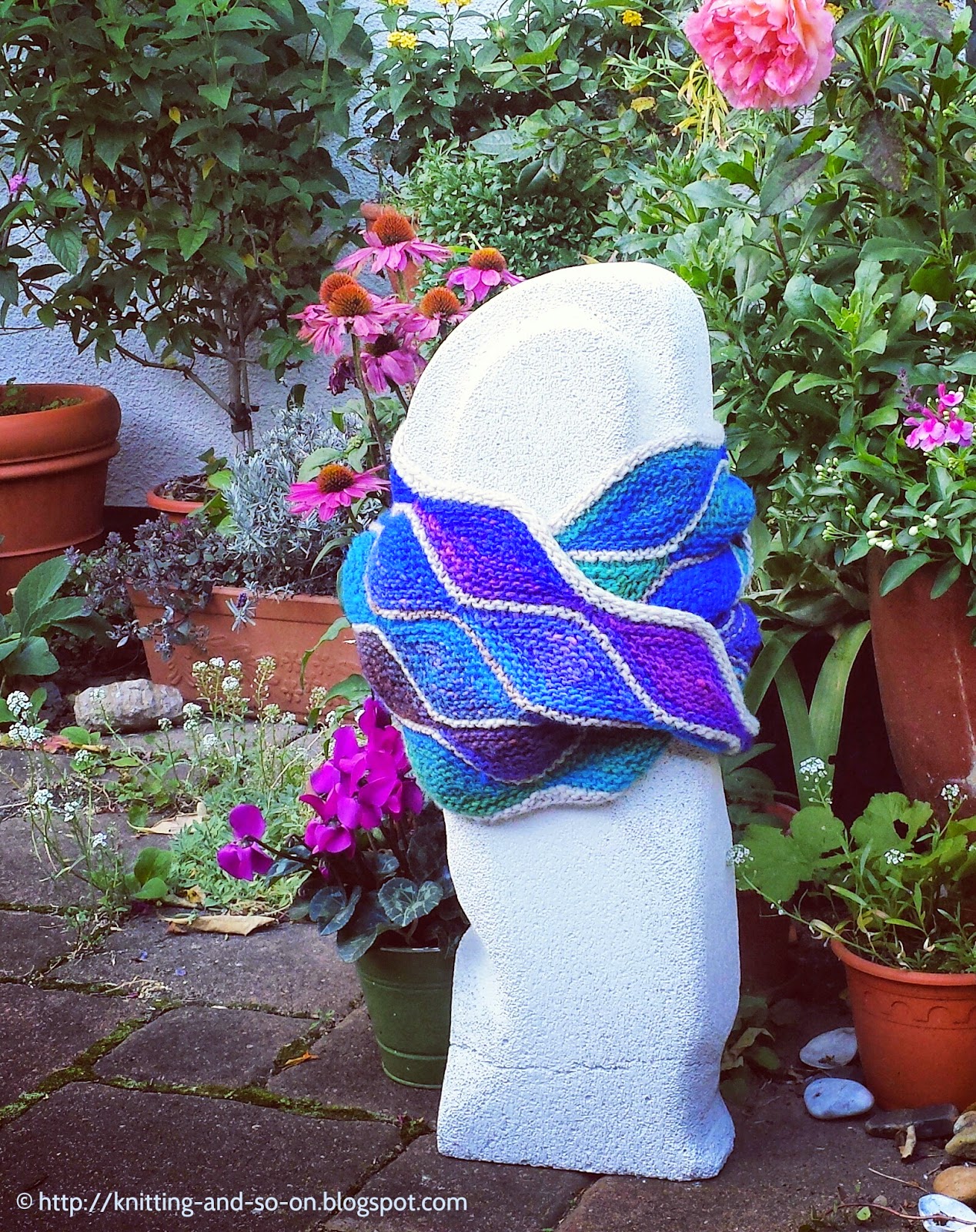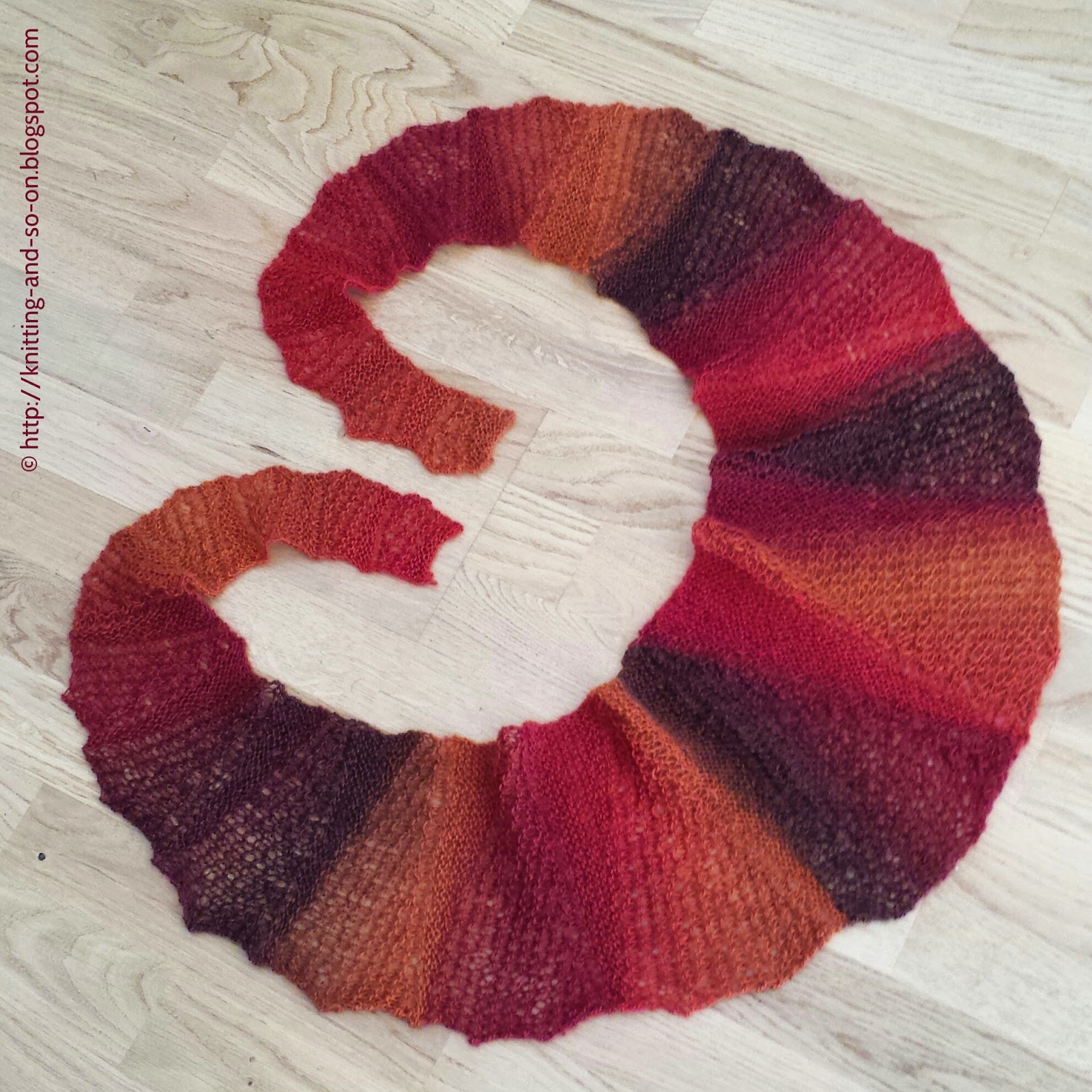These are scrunchies that I made from "hosiery yarn", i.e. strips of cut up pantyhose.
I used old "hosiery yarn" I made a few years ago (see blog post here) using the method described here.


This work by Knitting and so on is licensed under a Creative Commons Attribution-NonCommercial-ShareAlike 4.0 International License.
Materials
- to balls of hosiery yarn (in two colors) - one ball equals the yarn you get from one leg
- one piece of hair elastic
- rather big dpns - I used 12mm dpns, but other sizes will do as well
- a tapestry needle for finishing
Instructions
The numbers in brackets refer to the numbers in the picture. Basically, you'll be knitting a tube around the hair elastic.
(1) With yarn A (beige in the picture) cast on 3 stitches (-> needle A)
On a second needle (-> needle B) cast on 3 stitches with yarn B (black in the picture)
(2) With yarn A knit all stitches from the needle B, the working yarn of both colors is now at the same place.
(3) Slip the hair elastic over needle A and the stitches on this needle. The elastic ends up between the needles. Turn work and knit all stitches on needle A with yarn B, slip the stitches on this needle back, and knit them with yarn A. There are now three rows on needle A (cast on with yarn A, one row with yarn B, and one row with yarn A) and two rows on needle B (cast on with yarn B, and one row of yarn A)
(4) Slip both balls of yarn through the ring, i.e. through the hair elastic and turn work. On needle B first knit all stitches with yarn B, then slip the stitches back and knit one row with yarn A. Turn work and repeat on needle A (i.e. knit one row with yarn B, slip the stitches back and knit them with yarn A).
(5) Repeat step 4 until your knitted tube is long enough to fit around your hair elastic. Don't forget to slip the balls of yarn through the elastic ring at the beginning of each round.
(6) When the tube is long enough, prepare for finishing, i.e. slip only yarn B through the elastic and knit the three stitches on needle B with this yarn. Now the cast on and the last row on each needle are knitted in the same colour. Cut yarn but leave a tail of about 20 cm. Turn work - you're now facing needle A. with a tapestry needle and yarn B sew the stitches of the last row to the cast on - stitch by stitch, Turn work and do the same with yarn A for the stitches on needle B.
Knot the ends together and use the flat end of the tapestry needle to hide ends inside the tube. Whatever you do, the end will look a bit messy, but once you wear it in your hair, these irregularities will not be visible.



